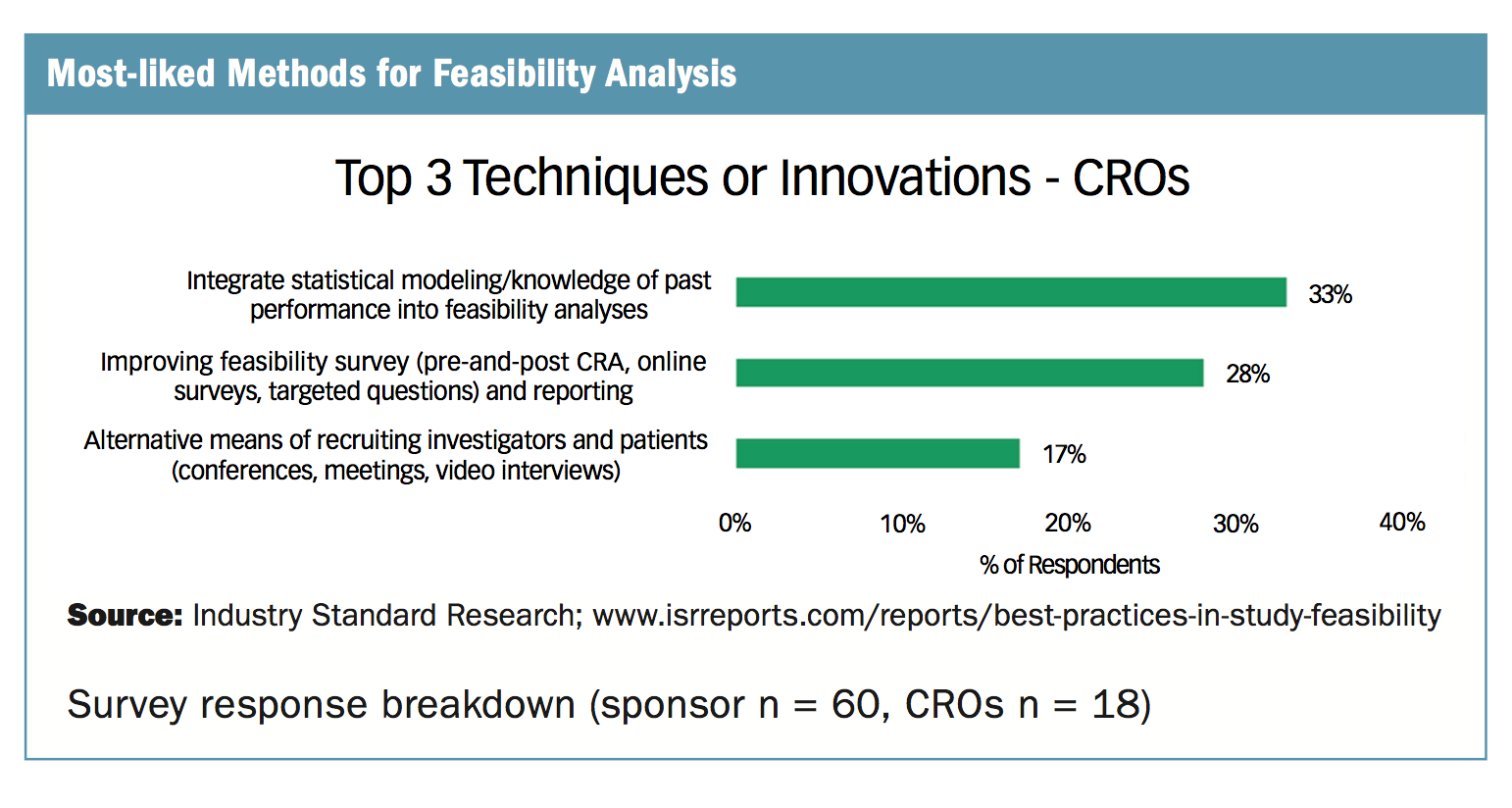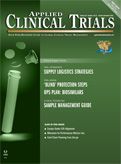Best Practices in Study Feasibility
Applied Clinical Trials
Survey drills down on the preferred methods of sponsors, CROs, and sites in conducting feasibility analysis.
Successfully navigating the medical, clinical, logistical and regulatory challenges associated with establishing the feasibility of a clinical trial is not easy. Insights from sponsos, contract research organizations (CROs) and sites have been compiled in ISR’s Best Practices in Study Feasibility report. A particular area of interest for readers of the report are the techniques and innovations proffered by sponsors and CROs for conducting feasibility analyses. Both groups identified that the integration of statistical modeling and knowledge of past performance into feasibility analyses is positively impacting the process.
Sponsors also see value in making direct, personal contact with investigators to build better relationships and a greater use of electronic medical record (EMR) data as positive innovations. CROs point to improved feasibility surveys and better targeting questions as ways to improve study feasibility estimations. ISR also collected insights to improve the accuracy of study feasibility estimates including: the percentage of trials that require a feasibility analysis, and whether the analysis is conducted in-house or outsourced; awareness of feasibility analysis service providers and frequency of use; and the data sources utilized for feasibility analyses and a ranking of which data sources contribute to the accuracy of the estimate.


Behind the Buzz: Why Clinical Research Leaders Flock to SCOPE Summit
February 7th 2025In this episode, we meet with Micah Lieberman, Executive Conference Director for SCOPE Summit (Summit for Clinical Ops Executives) at Cambridge Innovation Institute. We will dive deep into the critical role of collaboration within the clinical research ecosystem. How do we bring together diverse stakeholders—sponsors, CROs, clinical trial tech innovators, suppliers, patients, sites, advocacy organizations, investors, and non-profits—to share best practices in trial design, program planning, innovation, and clinical operations? We’ll explore why it’s vital for thought leaders to step beyond their own organizations and learn from others, exchanging ideas that drive advancements in clinical research. Additionally, we’ll discuss the pivotal role of scientific conferences like SCOPE Summit in fostering these essential connections and collaborations, helping shape the future of clinical trials. Join us as we uncover how collective wisdom and cross-industry partnerships are transforming the landscape of clinical research.
Phase III Trial Data Show Subcutaneous Pembrolizumab as Noninferior to IV Keytruda
March 31st 2025Subcutaneous administration of pembrolizumab with chemotherapy demonstrated a nearly 50% reduction in patient chair and treatment room time while maintaining efficacy and safety endpoints compared to intravenous Keytruda.
Reaching Diverse Patient Populations With Personalized Treatment Methods
January 20th 2025Daejin Abidoye, head of solid tumors, oncology development, AbbVie, discusses a number of topics around diversity in clinical research including industry’s greatest challenges in reaching diverse patient populations, personalized treatment methods, recruitment strategies, and more.